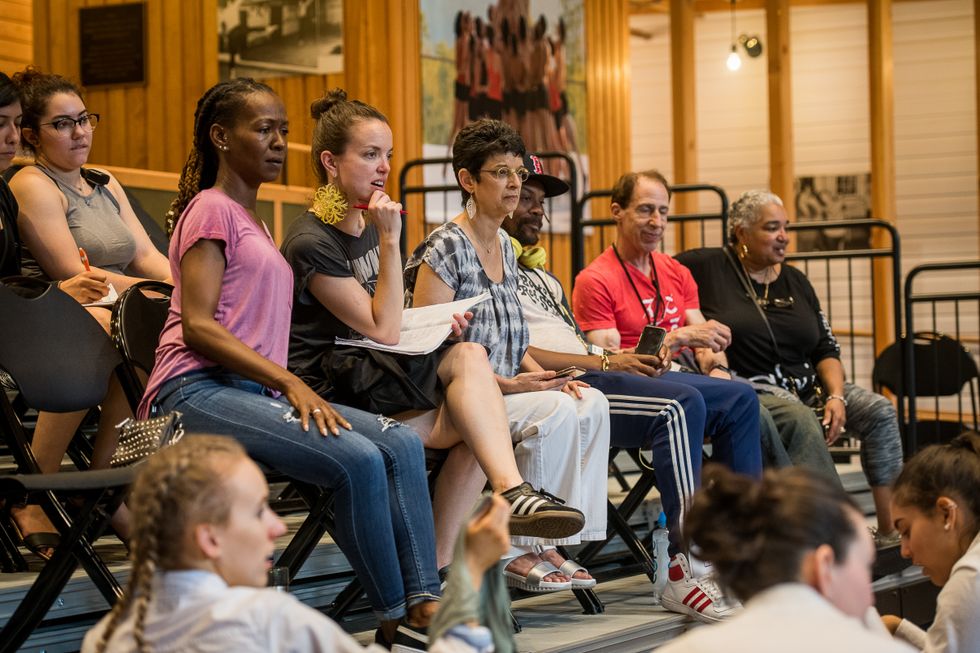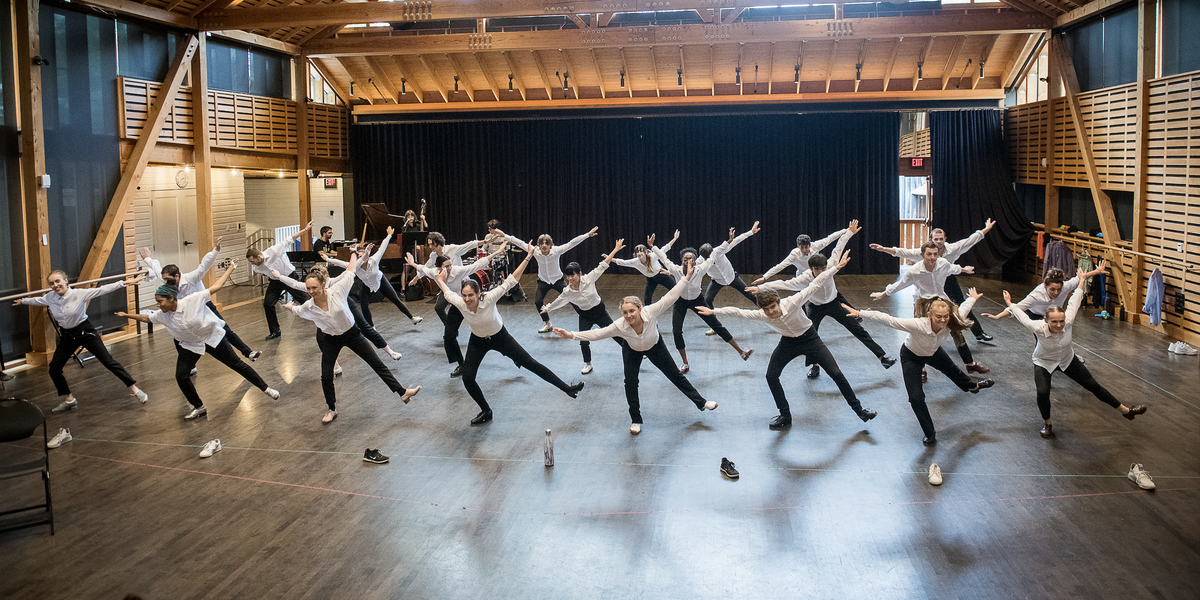Every Day is a Performance at The School at Jacob's Pillow
Since she was little, Hannah Kravec, 16, had been watching videos of dancers she revered perform on the Inside/Out stage, a serene venue overlooking the Berkshire mountains on the campus of the Jacob’s Pillow Dance Festival. Suddenly last summer, she was dancing on it herself as a student in the school’s tap program.
“It was surreal,” she says.
Performing on that idyllic stage, which has seen its share of famous feet, is one of the many unique experiences that set the Pillow’s school apart from other summer dance intensives. Founded in 1933 by modern dance pioneer Ted Shawn as a retreat for his all-male dance company, Jacob’s Pillow is now one of the most prestigious dance festivals in the world, welcoming companies from across the U.S. and around the globe over its jam-packed 10-week duration.
Students at the school get unparalleled access to artists (through class visits, cast parties and casual cafeteria interactions), performances (while serving as ushers) and the extensive video archives and library that make the Pillow a regular pilgrimage for dance fans.
The school’s annual offerings consist of one- and three-week programs: contemporary ballet, contemporary, choreography, dance photography, and either tap or musical theater, which alternate years. (Musical theater will be offered in 2020; the tap program returns in 2021.) An additional program changes year-to-year to respond to the field; recent examples include hip hop and flamenco.
Those opportunities stem from the school’s focus on career advancement and performance readiness—hence those weekly Inside/Out performances, which the school’s longtime director J.R. Glover calls “a bridge from the studio to the stage.”
Furthering the aim of preparing students for performance careers, the school enlists a faculty composed of working artists, directors and choreographers and prioritizes the development of new work, rather than teaching repertory.
Each day runs from 9 am to 5:30 pm, followed by ushering at a main-stage performance, then more rehearsals and a late-night jam session.
“It’s great because it’s such a supportive environment,” says student Gabrielle Niederhoffer, 19. “Because of that, we’re able to grow so much.”
Students and faculty frequently dine together at the Pillow. “We talk about what it means to be a tap dancer, about the history of the art form,” Niederhoffer says. She adds that insight comes from peers, as well. “We’re from 10 countries, and everyone has unique training, so we learn from each other.”
During classes, students get used to the constant flow of observers, photographers and videographers, as well as potential future employers. When their companies are performing, artists like Emily Molnar or Kyle Abraham might peek in or teach a master class, so students learn to always be on. “It’s a piece of that training regimen, too,” says Glover, “that every day is a performance.”
Last summer’s tap students quickly adapted to the frenetic pace of the Pillow as they prepared for an end-of-session public show called Gotta Dance. They learned new choreography and repertory from acclaimed artists like Derick K. Grant and Jason Samuels Smith.
Michelle Dorrance, who co-directed the 2019 tap program along with Dormeshia, staged an adapted version of a work from her 2013 show The Blues Project. The dancers performed it in the historic Ted Shawn Theater, the Pillow’s main stage.
 Tap faculty is filled with major tap stars like Dormeshia, Michelle Dorrance Derrick K. Grant, Sam Weber and Dianne Walker
Tap faculty is filled with major tap stars like Dormeshia, Michelle Dorrance Derrick K. Grant, Sam Weber and Dianne WalkerChristopher Duggan
“If you’re honest and generous with your vulnerability, the audience will feel it,” Dorrance told the students, after giving a brief history of tap’s relationship to jazz and blues music.
“They have to remember so much material and all of these notes and adjustments,” Dorrance says, with pride. “Any changing in blocking they have to apply immediately; there’s not much time for mistakes. This is leading into a show that people pay to see. The urgency with which we have to polish these things is a real-life experience.”




